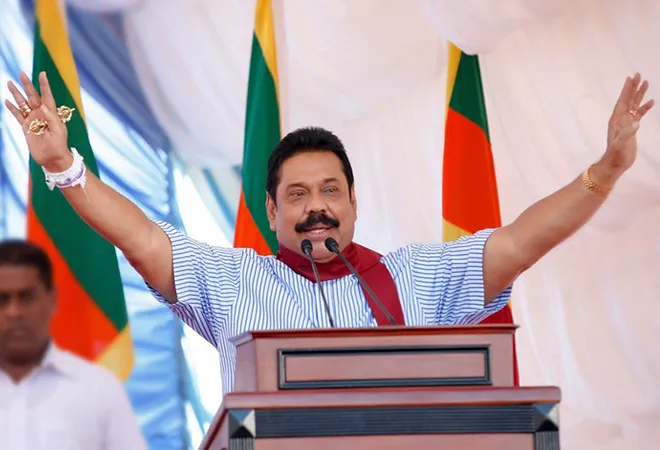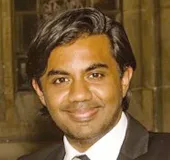
Chess teaches the Clausewitzian concepts of “centre of gravity” and the “decisive point”— the game usually beginning as a struggle for the centre of the board. Wei qi teaches the art of strategic encirclement. — Henry Kissinger, ‘On China’
In Wei qi, the 2,500 years old Chinese abstract strategy board game, the goal is to slowly and patiently build up assets to tip the balance of the game in one’s favour. The emphasis is on long-term strategy, not short-term gains, argues Kishore Mahbubani in his latest book Has China Won? Is China playing Wei qi in deferent geographical locations? Is China tilting the global power balance in its favour?
The world has managed to evade another human carnage of a World War since 1945 with long peace as written by historian John Lewis Gaddis in 1986, extending further into the post-cold war era. We have lived 75 years of long peace limited only to proxy wars. Has the balance of the game changed with the rise of China and escalated US-China geopolitical tension predominantly in Asia? China’s rise was discussed by two intellectual heavyweights in international relations, John J. Mearsheimer and Kishore Mahbubani in a recent debate, with two divergent views. Mearsheimer sees a contested environment with a zero-sum game where China would eventually be compelled to take the US’s global hegemonic position and its economic interest will transform into military interest. While Kishore sees a positive-sum peaceful rise of China in a civilisational context and other nations accepting China’s rise rather than agitating against the rising power. Both scholars referred to George Kennan, the guru of containment in the Cold War, when discussing the need for strengthening strategic alliances to contain China.
In the present Cold War 2.0, with the US having a clear pier competitor, perhaps the geometry of power in international relations is certain to change — from the unipolar world order — where alliances such as the Quad Plus and many more would emerge in the next decade.
Prof Mahbubani states: “America did not win the Cold War on its own. It formed solid alliances with its Western partners in NATO and cultivated key third world friends and allies, like China, Pakistan, Indonesia, and Egypt. To preserve these close alliances, America kept its economy open to its allies and generously extended its aid. The Trump administration has announced an America First policy and threatened to impose tariffs on key allies like the EU and Japan and third world friends like India.” Seeing the weak US alliances in the present context, Mearsheimer’s view is that the next US administration would have to invest more and strengthen strategic alliances to contain China. In the present Cold War 2.0, with the US having a clear pier competitor, perhaps the geometry of power in international relations is certain to change — from the unipolar world order — where alliances such as the Quad Plus and many more would emerge in the next decade.
The recent Indo-China border tension adds further strain on regional geopolitics. A senior Indian government official after meeting with Prime Minister Narendra Modi to review the ongoing border tension observed: “From Australia to Hong Kong to Taiwan to the South China Sea to India and right up to the US, a bellicose China is staring at the world for domination at all costs.” With the heightening of tensions in the border, three senior diplomats, Ambassador Shyam Saran, Ambassador Gautam Bambawale and Ambassador Ashok Kantha see the close India-US strategic engagement as a factor for Chinese behavior. If the US-India strategic engagement is a factor, then there will be definite ripple effects to regional countries of South Asia, including Sri Lanka due to its long-term relations with both countries. Many nations could end up with binary choices between China and US, unwillingly departing from its neutrality due to geopolitical friction.
Mahinda Chinthanaya the foreign policy vision of Prime Minister Mahinda Rajapaksa was spelt out in 2005 with a ‘non-aligned’ posture. A similar ‘neutrality’ is expressed by President Gotabaya Rajapaksa’s foreign policy in the present day. Amid heightened geopolitical tensions, the challenge will remain in executing the neutral foreign policy. Many nations have secured their economic interest with China whilst balancing their security interest with the US. Australia is a clear example when it comes to securing export revenue with China and Security alignment with the US. According to Australia’s leading strategic thinker Hugh White, “Australia’s future will be dominated by China, Treasury forecasts show that the Chinese economy will be about 80 per cent bigger than America’s within a dozen years. In this environment, Canberra must prepare for the new strategic terrain in the wake of America’s declining leadership, and we would be unwise to support Washington in a confrontation with China that America probably cannot win.”
Mahinda Chinthanaya the foreign policy vision of Prime Minister Mahinda Rajapaksa was spelt out in 2005 with a ‘non-aligned’ posture. A similar ‘neutrality’ is expressed by President Gotabaya Rajapaksa’s foreign policy in the present day.
Within South Asia, China’s trade has grown in the last decade. China’s trade with all South Asian countries is mainly export-driven and higher than that of India. India’s trade volume with its neighbours has remained well below in value to that of China (Graph). The growth of China’s economic space is a clear indication of its growing influence and economic engagement in the region. With its closest neighbour India in a direct border dispute with China, Sri Lanka will have a greater challenge in dealing with these two powerful nations in its foreign policy realm. China’s heavy financial assistance and economic interest in the island will be a vital factor in the foreign policy decision-making process of the Sri Lankan Government.
50 years of Rajapaksa politics
In the domestic arena, the difference between eras of Mahinda Rajapaksa’s presidency (2005-2015) and Gotabaya Rajapaksa’s presidency is that the geopolitical context has changed significantly. In the backdrop of India-China border disputes and US-China geopolitical tensions, there will be a significant expansion of Chinese dominance in the island to contain the US-India influence. Among the many congratulatory messages for Prime Minister Mahinda Rajapaksa’s 50th political anniversary on 27 May this year, one was Indian Prime Minister Narendra Modi. This was the second telephone conversation the Indian Prime Minister had with the Rajapaksa family during the last few days. First was with President Gotabaya Rajapaksa on 23 May, where the Sri Lankan President sought from the Government of India, a USD 1.1 billion special SWAP facility to add to the USD 400 million SAARC Fund, to deal with the foreign exchange issue the country is facing right now. The Indian premier assured, “we are ready to help under terms that are favourable to Sri Lanka.” This explains India is keen to sincerely assist to strengthen the Sri Lankan economy facing direct effects of the pandemic.
Mahinda Rajapaksa’s illustrious political career continuing his father’s political legacy for half a century is in itself a significant achievement. South Asia has many political dynasties but the Rajapaksa family stands out for two symbolic accomplishments in the international sphere. First ending an almost 30-year war which was seen as an impossible task by many back then and second, for the geostrategic Hambatota Port, a hot topic in the global arena, which was built by Rajapaksa welcoming the Chinese strategic relationship and further cemented it with multiple bilateral agreements during the visit of President Xi Jinping to the island in 2014. Having lost the presidential election in 2015, he returned to power as prime minister in 2019. Mahinda Rajapaksa stands out as a symbolic leader surviving political office with internal and external pressure at various interludes.
South Asia has many political dynasties but the Rajapaksa family stands out for two symbolic accomplishments in the international sphere. First ending an almost 30-year war which was seen as an impossible task by many back then and second, for the geostrategic Hambatota Port.
Former President Sirisena, in a special video to celebrate the Prime Minister’s 50 years in politics, states “I had to make him the Prime Minister to save our nation in 2018.” This signifies that only Mahinda Rajapaksa stands out from the rest, trusted to protect the national values and interests of the nation. A political trust he has built over time with the Sri Lankan polity that is testament to authenticity of his leadership. In a tribute to Prime Minister Mahinda Rajapaksa, his son Namal Rajapaksa recalls the words uttered by his father on the night the war ended: “Our work has now only begun. Let us raise this country to its true potential now that the bombs are over. Let all my people live in peace.” A sincere vision to engage on a genuine path of reconciliation and peace-building that was unfulfilled with much to be done to heal the wounds. The agitation and ideology of the LTTE remains as was seen on Victory Day with back to back cyber-attacks on several official government websites, displaying the Tamil Eelam ideology.
While losing the presidential race in 2015, Mahinda stood firm amidst an internal political storm against his family. Sri Lankan politics “can either transform you into a strong figure or it can break you in every way possible,” says Namal. In an environment where the country needed the leadership to be a rock of stability following the 4/21 Easter Sunday attack, Mahinda Rajapaksa seen as the most trusted leadership figure who could deliver stability and ensure national security, supported his younger brother Gotabaya to be was elected as the President of Sri Lanka. He is another proven leader who has been effective in the nation’s complex security environment. Whilst balancing the triple spheres of influence (US, India and China), Rajapaksa’s will face triple threats, stemming from the rising geopolitical tension in the region to its foreign policy and the rise of the ideological warfare from the LTTE and the Islamic extremist ideology that led to the brutal Easter Sunday attacks.
The views expressed above belong to the author(s). ORF research and analyses now available on Telegram! Click here to access our curated content — blogs, longforms and interviews.




 PREV
PREV


